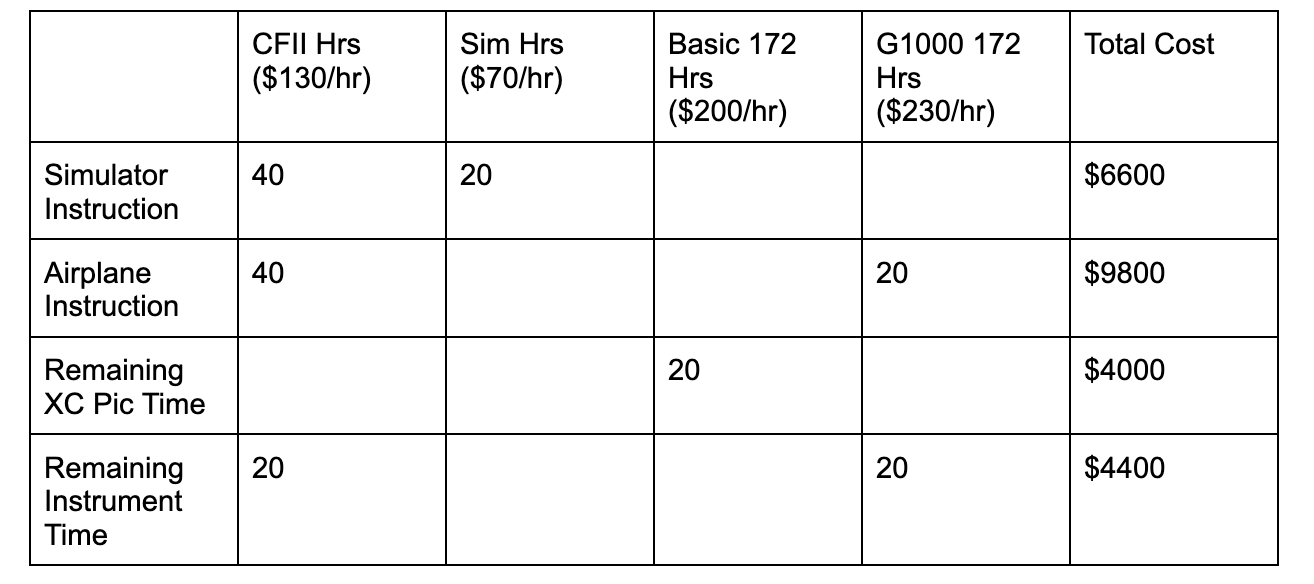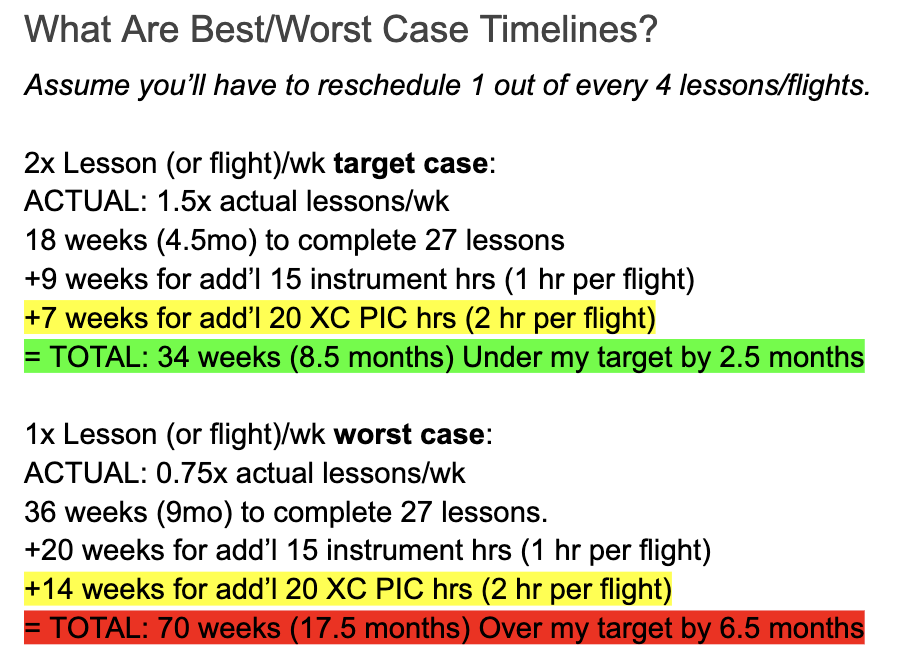Pre-IFR: Sims, Live ATC, and Exams
Scroll DownWe haven’t talked in a while! I’ve been busy since getting my Private Pilot Certficate: hitting up destinations on the Fly Washington program (23 stamps and counting!), building my cross-country Pilot-in-Command (PIC) hours, and enjoying the variety of weather we get here in Western Washington from the air.
But there’s a key limitation I need to solve - clouds. Good-weather flying is lovely. We all want it. But what options do you have when the clouds sock in? If you’ve only got a rating to fly VFR, not much.
Oh, The Places You’ll Go (Are Seriously Limited without IFR)
Not everyone wants to get their Instrument rating. But without it, you’re going to find it harder to do some of the other things you might dream of in your flying lifestyle:
Getting your Commercial: Without instrument, you can get it but you can’t do much with it. No taking passengers more than 50nm, and no passengers at night.
Flying High: Without instrument, you’re restricted to flying under 18,000 feet - Class A airspace is IFR-only.
Truly Overnighting: Look, there’s nothing that says you can’t do an overnight on VFR, head somewhere, sleep, and head home the next day, but … if you had any doubt at all that the weather would stay VFR for the flight home, you wouldn’t go, would you? IFR gives you the flexibility to get home.
For these reasons at a minimum, I made the choice to go for Instrument after my Private certificate.
What’s Needed, and What will It Cost?
Let’s start with the requirements. For an Instrument ASEL candidate to qualify for the checkride:
- 50 hours of cross-country PIC time (for a part 61 school)
- 10 hours must be in an airplane
- 40 hours of real or simulated instrument time (for part 61)
- 15 hours must be instruction from an authorized instructor
- 3 hours must be in an airplane in last 2 months
- 15 hours must be instruction from an authorized instructor
- One 250 nm instrument cross-country training flight which includes:
- 250 nm along airways or ATC-directed routing
- An instrument approach at each airport
- Three different kind of approaches flown (ILS, VOR, GPS etc)
- A score of 70% or greater on the FAA Written exam
- Must be passed within last 2 years
You can do no more than 20 hours combined in FAA-approved simulators. The rest has to be in real airplanes.
When I planned, I had 30 cross-country PIC hours, so that meant I had 20 left to get.
This led me to the following pricing chart:

So it comes out to be about $25,000.
Lots of assumptions here:
- Flying G1000 172s for instruction
- +25% airplane hours to instrument time for taxi/to/ldg/etc (sim time doesn’t have these overages)
- CFII time is more expensive by 30% than CFI
- Add 1 hr of extra CFII time for every hr of airplane instruction time for pre and post
- Will get full 20 hrs of simulator with CFII time
- XC PIC time is solo flying in non G1000 172s
How Long Will It Take?
I have set a goal to be done by May 2024, but can’t start the practical until April 1st 2023. Since the curriculum at Galvin Flying (where I train) has a fixed number of lessons, then the math becomes simple:

Put it all together, here’s how I decided this needs to be done:
- Finish up your XC PIC time before April ‘23. Make it a nonissue.
- Start lessons right on time April 1 ‘23 or earlier. Don’t waste a moment.
- Go for 2x lessons/wk. Know that you’ll get 1.5 due to reality, it’ll make the deadline.
- Push for real plane in good weather. Hold back some sim time for wx or winter.
- Don’t skimp on foggles time. Push for a little more than comfortable. It adds up.
- Consider one or two “catch up” weeks. Use vacation to remove sched conflicts.
So What Do I Do In The Meantime?
Can’t start the practical for a month? What can I do? Two things: take the (dreaded) FAA Instrument Written Exam, and practice on a home sim with real IFR procedures.
The Written Test
A pilot friend of mine who recently got his Instrument rating had the brilliant idea to get his ground school and written exam out of the way before starting his practical training. I liked that idea!
I used Sporty’s Ground School on the iPad, taking the classes in the evenings after work. Then, it was prep for the exam.

The Instrument Written is famously difficult, nitpicky, and requires a deep understanding of procedures. I used these techniques to help me:
- Practice tests until you hit 90%. This is a great feature of Sporty’s. The tests are very close to the real thing. You need 70% to pass, so get to 90% at a minimum and get at least 3 in a row.
- Buy and study the exam guide. The ASA exam guide has pretty much all the questions you’re going to get, all the right answers, and it often explains why they’re right.
- Practice writing your “one sheet”. You get two sheets of blank paper when you go into the test. One of the best things you can do for yourself is train yourself to write down a “one sheet” of obscure facts that trip you up on your practice tests. Once you’ve trained yourself, when you go into your exam, the first thing you do is write that sheet down from memory.
Flight Simulator and Pilotedge: the I-Ratings
Here’s the practical part before the practical - with a decent flight sim rig, a copy of Microsoft Flight Simulator, and a subscription to Pilotedge, you can actually perform a lot of the required IFR procedures you’ll be learning in your practical training!
This month, I’m challenging myself to the official Pilotedge I-Ratings, a selection of progressively more difficult IFR procedures that are graded by the Pilotedge staff to ensure you’re performing up to scratch.
I got my first Pass today - for the I-1 challenge! Watch the flight below:
Next Steps
It’s less than a month until I start the practical - I’m looking forward to passing as many of the I-Rating challenges as I can, to keep my skills up, and hopefully translating these into the sims (and real planes) of the training fleet with a bit more ease for the sim work I’ve been doing.
Even if not, I’m enjoying the ride and feeling like the lessons from ground school are “sticking” more. I’m committed to always be learning - even when I have to get creative to do it.
